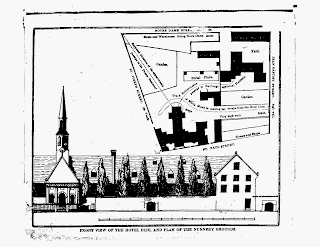Griffin, Susan. “Awful Disclosures: Women’s Evidence in the Escaped Nun’s Tale.”
PMLA 111.1 (1996): 93-107. JSTOR. Web. 14 Sept. 2010.
Griffin examines the proliferation of escaped nun’s tales from the 1830s to the 1850s, most notably those of Maria Monk and Rebecca Reed, in light of not only the tradition of anti-Catholic literature propagated by Protestants at the time but also the implications of the female religious renegade for women more broadly. By juxtaposing the escaped nun’s tale with the more popular genre of the nineteenth-century women’s domestic novel, Griffin illustrates how the problematic figure of the escaped nun, her status as both accuser and evidence of Catholic crimes, and the discourse surrounding her imprisonment and escape undermine the authoritative female ideal exemplified in the domestic novel. She outlines common tropes in escaped nuns’ tales, particularly those relating to supposed proof of the author’s veracity via strategies of both inclusion (maps and diagrams, interviews, depositions, corroborating articles from clergy, etc.) and exclusion (pointing to but suppressing certain supposed evidence because it is too shocking, too racy, lost, or inaccessible somehow), creating “blank spaces” (99) for the reader to construct the textual reality of the narratives. She places this common emphasis on authorial veracity in the context of nineteenth-century attitudes toward women’s evidence in the public sphere, arguing that, as female public speech and agency was at the time viewed as transgressive, women must gain the approval and backing of men before engaging in public discourse; this necessity reveals itself in the often male-dominated evidence of the nuns’ tales. However, these excessive corroborations also serve to undermine the veracity of the female speakers, as their adherence to generic tropes and conventions further fictionalizes the content of the narratives; women’s evidence, then, is both insisted upon and simultaneously discounted, further complicating the question of female agency.
In my paper, I plan to discuss issues of female transgressiveness and agency in terms of the body, speech, and writing. This article provides useful background information on the transgressive nature not only of the escaped nun’s tale genre itself but also of its authors, characters, and audiences. I plan to use this article and others like it to illustrate the complications inherent in the feminine struggle for bodily agency in Awful Disclosures, the places in which this struggle meets with resistance, and the ways in which it attempts, successfully or unsuccessfully, to overcome it.




